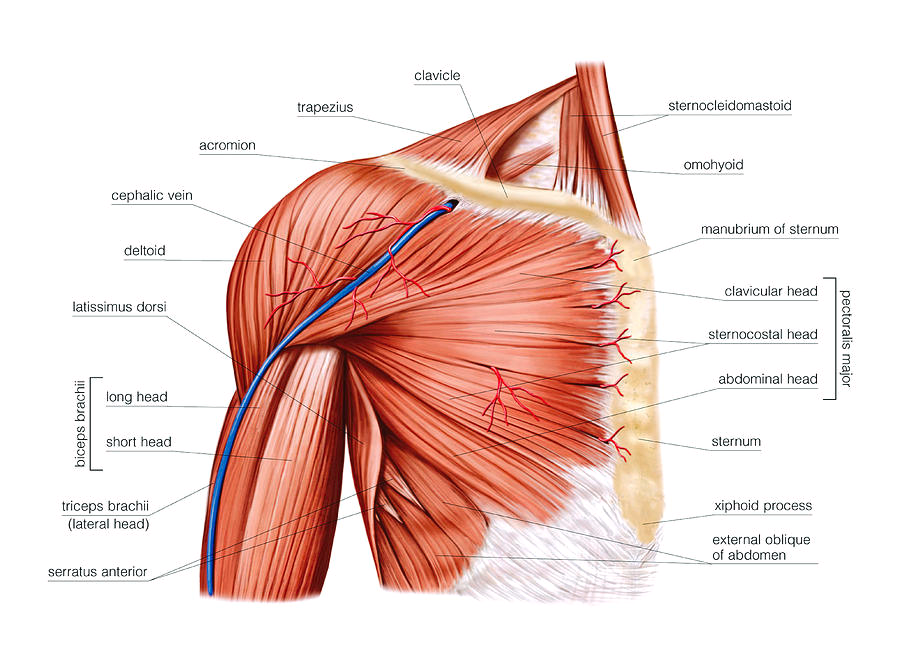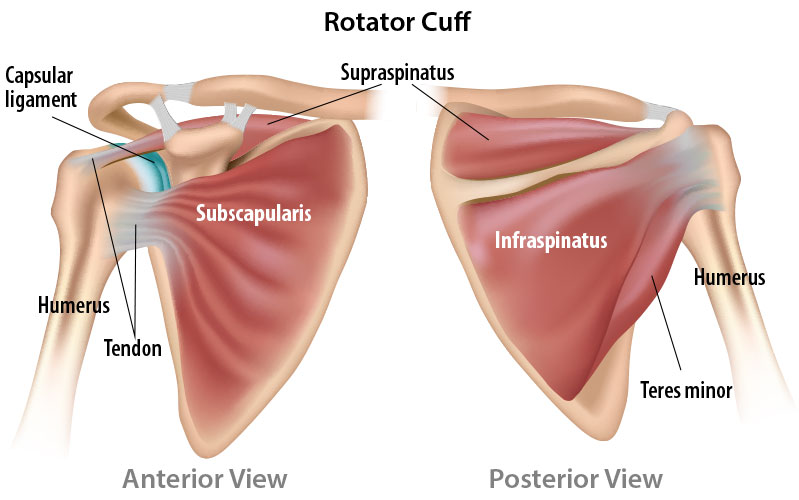The Shoulder Explained
- Healthy Is Movement Team
- Jun 6, 2022
- 3 min read
Updated: Jun 7, 2022
Did you know that the most mobile joint in the body is the shoulder? This unique capacity for significant range of motion allows humans to accomplish amazing feats, such as throwing a baseball 100 mph. Unfortunately, due to its complexity, the shoulder is also one of the most vulnerable joints to injury, affecting 18-26% of adults.[1] This blog will discuss shoulder anatomy and why this month’s Shoulder Trifecta exercises can help you prevent and recover from shoulder pain. If you want to learn about lesser-known culprits of shoulder pain, such as poor thoracic (upper back) mobility, check out this month’s Perspective!
QUICK ANATOMY

The shoulder joint complex is composed of 4 joints (see photo) and mostly involves the collar bone (clavicle), shoulder blade (scapula), and upper arm bone (humerus). This design is important as it allows the shoulder to be extremely mobile and move in almost every direction. The most famous of these joints is where the humerus connects to the scapula (glenohumeral joint [GH]), and is commonly referred to as the ”shoulder joint”. While lifting your arm overhead, you can see how each of the respective joints assists with the motion (see video). In short, the SC joint rolls upwards and AC joint slides to allow the scapula to rotate upwards. The ST joint is not a “true joint” as its ability to move is directed by the SC and AC joints along with its surrounding musculature. Interestingly, 1/3 (60 degrees) of the motion in the shoulder to achieve upwards rotation comes from the SC, AC, and ST joints. The remaining 2/3 (120 degrees) of the motion comes from the GH joint.
It is easy to get lost in the complexity of the shoulder joints and their muscles. In summary, the goal of the shoulder muscles is to move the humerus. The deltoid muscle is the powerful primary mover of the humerus, whereas the rotator cuff (4 small muscles that connect the humerus to the scapula) help stabilize the top of the humerus in the “socket” of the scapula. If the rotator cuff muscles are weaker or not working optimally, the deltoid will take over and cause the shoulder to change how it moves, potentially resulting in an irritating pinch of muscles below the AC joint (impingement). Other important muscles surround the scapula and help the scapula rotate, tilt, and elevate. These muscles include the trapezius, rhomboids, serratus anterior, and many others.

The most important thing to take away from the shoulder muscles is that they need to work together in order for a movement to be successful. It is much simpler (and functional) to think about shoulder muscles in terms of what is getting tight, and what is on stretch. For example, if you are reading this article on your phone, pause a moment to take inventory of your posture: perhaps your shoulders are rounded forward, rotated inwards towards your belly, and tight close to your body. If this position is maintained for extended periods, the shoulder muscles tighten on the front and lengthen in the back. This can result in a myriad of issues. This stiffness pattern can alter how your joints move and can even cause muscle “pinching” or tendon irritation while performing everyday activities.
WHAT TO DO?
If you are like most humans today, the front of your shoulders are likely tight (think of the previous example about reading this blog on your phone). As mentioned in previous Deep Dives, the Law of Opposites is critical (“move in the exact opposite direction from what you do all day”)! Activities like “Chest Openers” and “Seated Shoulder Stretch” are great to integrate as microbreak stretches throughout your workday to balance out your shoulders.
STRETCH, STRENGTHEN, AND SOOTHE
The Shoulder Trifecta exercises can help the shoulder stay healthy and injury-free. Specifically, band raises help strengthen stabilization muscles (rotator cuff). Shoulder clocks help shoulder mobility by challenging the 4 shoulder “joints” (seen earlier) and by dynamically stretching all the muscles around the shoulder. Lastly, shoulder massage is effective for reducing built up tension (knots/triggerpoints) in muscles surrounding the shoulder considering muscle tension can alter shoulder mechanics. The ball we often use is a lacrosse ball, but a tennis ball would also work. The areas surrounding the shoulder blade are great places to start (press the ball against muscles – not bone).
References
Linaker CH, Walker-Bone K. Shoulder disorders and occupation. Best Pract Res Clin Rheumatol. 2015;29(3):405-423. doi:10.1016/j.berh.2015.04.001

Healthy Is Wellness, LLC (“Healthy Is Wellness”) is not a health care provider, and does not provide professional medical advice, diagnosis, and/or treatment. THE INFORMATION PROVIDED BY HEALTHY IS WELLNESS IS FOR INFORMATIONAL PURPOSES ONLY.









Comments